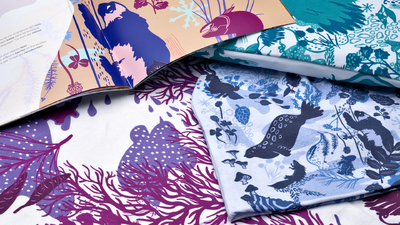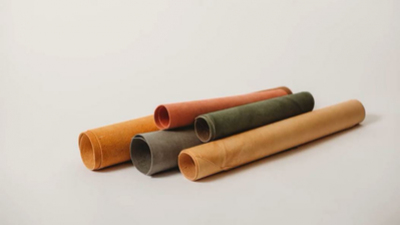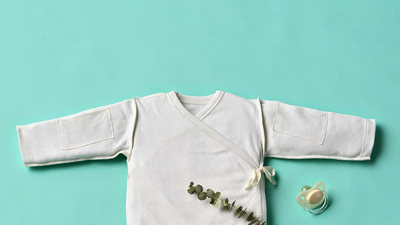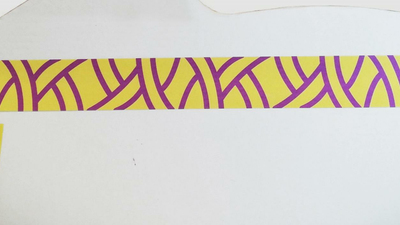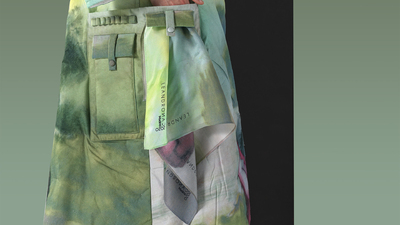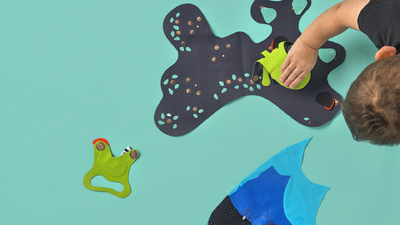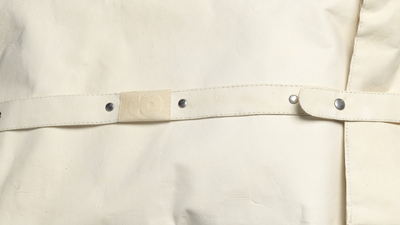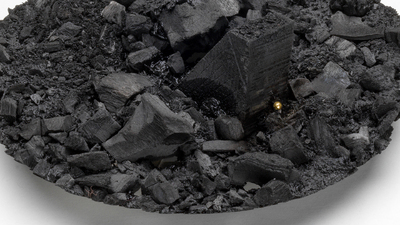PULSAR
We have similar interest in the use of technology to combine science, psychology, arts and fashion with the help of storytelling and an emphasis on human innovation. Frederik had already been working with celestial data in previous projects so that was our starting point. With the help of visual research and by combining the knowledge of our own expertise we managed to elaborate and include new techniques that can be used with the help of the software that Frederik developed. We transform data into meaningful personalized patterns (e.g. textile, weaving, digital printing) generated with custom novel software as well as 3D printed personalized objects (e.g. sunglasses, bracelets, handbags) by applying data-driven material modelling with custom code and scripts in existing industrial grade software (e.g. Rhino/Gh). Custom code and scripts for Rhino/GH can bake the generated data patterns into a 3D printable model (e.g. a 3D printed jewel). Our custom software outputs SVG and high-resolution PNG files which can be used to create 3D printed objects, or as patterns to create jacquard textile weavings, digitally printed textiles and laser cutting in textile, leather, etc.
With this technology we can consult the fashion industry on co-creation and help customers with the personalization of products. We image how things could be different for our customers in times of co-creation, decentralized manufacturing, personalization and automatization. Focus on the narrative and data collection while the software does the rest. By using data and applying intelligence in the design workflow and production pipeline we keep our digital ecology clean, optimized, sustainable and meaningful. Patterns in data are now visualized (incl. VR, AR) and materialized. Hence, we showcase a potential to create new narratives, experiences and personalized products.
Our tool can use any given data set but our demonstrator is generated and infused with celestial data from NASA. The pulsar stars are the most accurate clocks in the universe and are used to help us navigate the universe, by using celestial data that is linked to pulsar stars we will be able to connect time, dates and locations that have an emotional value to people to the output generated by the software. People will be able to wear a coat that is infused with the pulsar data generated on the day of their marriage. By further developing the connection between our tool and AR solutions it will be possible to scan your garment and thus see which data set / pulsar is used to generate the custom pattern. By using data as input in the creative process the possibilities are endless.
The biggest problem with this project has been that we are developing something that does not exist with the help of machines that are the cutting edge in the field of 3D printing. We have been collaborating with Stratasys to realize our prototypes and it has been an amazing journey but they are the only company in the world that has the technology to do this.
The impact on the Technology Provider/Owner As a technology developer and provider in the partnership we could potentially evolve in a high growth firm with an expertise in creative coding for TCLF industries in multi-disciplinary design environments, or develop a research oriented consultancyy firm which could include engineering services, activities as technology consultants, R&D boutiques etc. The project will strengthen our competitiveness and global position because we will move from TRL7 upwards into a more solid application with embedded machine learning algorithms for instance. In addition, it would enable us to collaborate with other companies like Stratasys ltd. For 3D printing, explore licensing possibilities to increase our turnover which directly impact our employment generation rate and overall financial performance.
The impact on the TCLF SME
By working close with the tech provider, we can steer the software engineering process in a more intuitive but also direct approach and interaction. This allows direct testing with the end user (i.e. the creative TCLF industry and designers) and develop a multi-purpose tool made for and with designers involved in the coding process. With the help of our demonstrator Pulsar we will be able to develop an innovative collection of textiles and high-end garments and accessories to showcase the potential of the software as well as propose collaborations with other creative players in the field like United Nude.
The impact this project will have on the competitiveness will be twofold: this technology is new hopefully we will be able to solidify our position in the market and develop in house knowledge to implement and scale up along the way during the project, as well as develop demonstrators and innovative designs making us an authority in the global market setting the benchmark.
Our manufacturing process is stable enough now to enter a low-rate production and develop a training, manual and maintenance document. We still need to implement AI and more specific machine learning into the application. This will require time, resources and testing. We would like to implement several new creative algorithms for visualizing data to expand on the creative possibilities of the application. Next to the technical development of the software we are creating partnerships with textile research hubs in order to continue to develop the creation of custom, creative and personal textiles that can used to create data infused garments. We are also working in close collaboration with Stratasys to create more and better prototypes.
Thanks to this collaboration we have been able to merge our knowledge and expertise. With the help of the mentorship of Worth project our initial idea has become a solid creative idea that is completely unique and ready to go to the market. The network and support from Worth project has helped us to create an elaborate and deeply personal story for our project and helped solidify our project from idea to concept.















